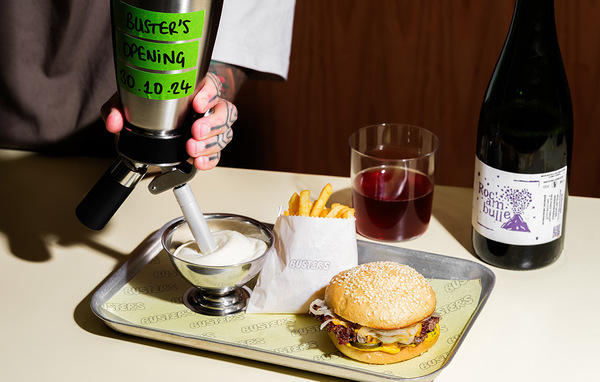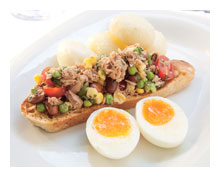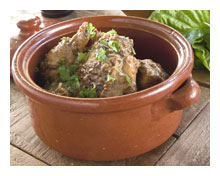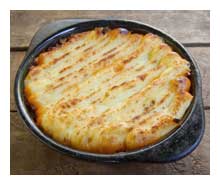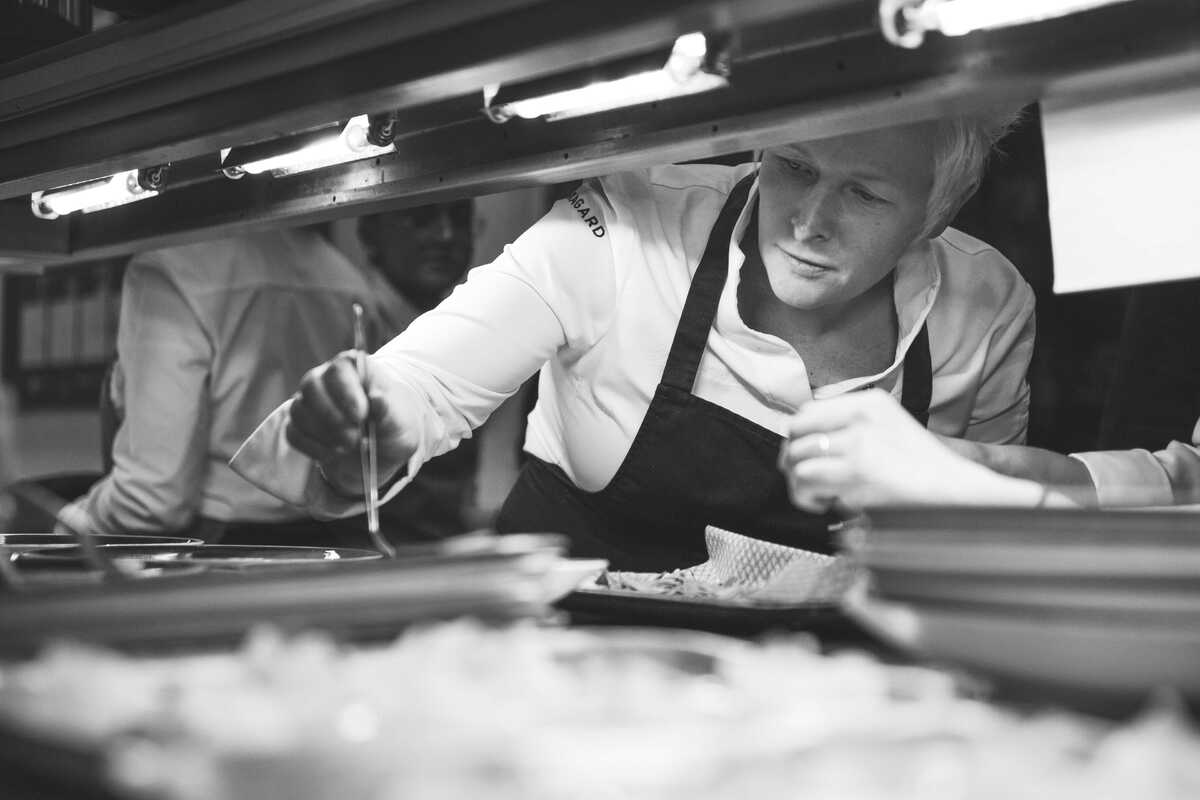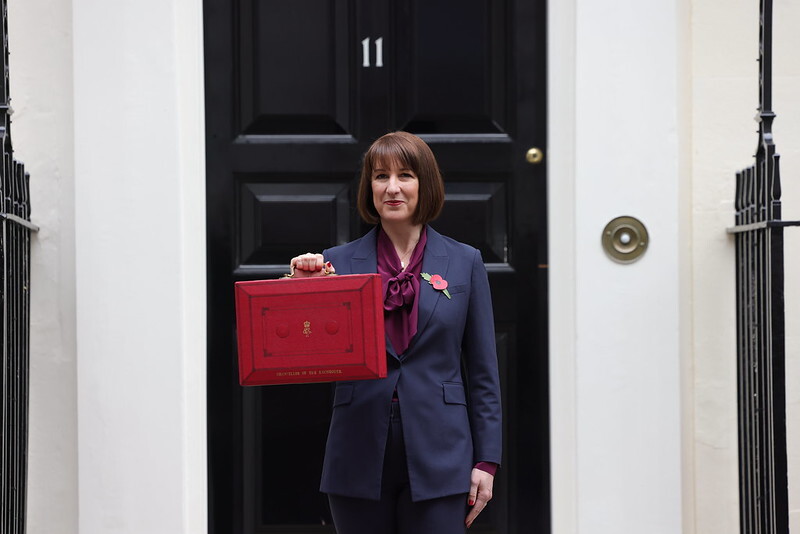Recipes for schools – lessons in simplicity
Struggling to devise recipes that meet the new guidelines for secondary schools, but also provide interest for your demanding audience? We asked Paul Heathcote, Cyrus Todiwala and Richard Corrigan - top chefs who have children of their own - to devise recipes that would be suitable for the school dining hall
Welcome to our education special issue, a collation of great recipes, research and comment that should help you plan the running of your service and meals over the next 12 months.
To kick off, we've put together the best suggestions for dishes to serve secondary schoolchildren - from top chefs Paul Heathcote, Cyrus Todiwala and Richard Corrigan - that should provide worthwhile additions to your menu or inspire you to create in a similar vein.
A new approach, after all, is required - the nutritional guidelines at secondary school level have been in the offing for a while and finally, come September, they will be upon us. So if you haven't adapted your menu already, there's still time!
The question many are asking, however, is whether, in a climate of falling numbers taking up the option of eating in the school canteen, the nutritional guidelines will make matters worse. Following the first-ever report on the issue of "fringe feeding" - those places such as take-aways and supermarkets outside the school gates - Tom Vaughan looks at the suggestions contained for upping the number of children eating at the school.
Finally, we are always discussing what we want for the service among ourselves - whether as caterers, manufacturers or publishers about the sector. But what about the end-user? What do the kids who have to eat the product of our school food service actually think of it? More than 7,000 children have been surveyed by the Litmus Partnership, and we publish their views.
So read on, and we hope you enjoy the issue!
TUNA, EGG AND BEAN SALAD WITH NEW POTATOES, BY PAUL HEATHCOTE
INGREDIENTS
(Makes four)
- 4 eggs
- 4 slices of crusty bread
- 1 clove of garlic
- Drizzle of olive oil
- 50g haricot beans, cooked
- 50g black-eye beans, cooked
- 50g borlotti beans, cooked
- 50g broad beans, cooked
- 50g frozen peas, cooked
- 50g frozen sweet corn, cooked
- 2 spring onions, sliced
- 12 cherry tomatoes, quartered
- 1tsp chopped coriander
- Juice and rind of 1 lemon
- 25ml olive oil
- Salt and pepper
- 2 tins tuna fish
- 6 new potatoes peeled and boiled and kept warm
METHOD
Boil the eggs for four-and-a-half minutes and refresh immediately into iced water, peel and cut into half. Sprinkle a little olive oil over the crusty bread and rub with a clove of garlic, toast well on one side.
Place all the ingredients together excluding the tuna and toss with the 25ml of olive oil.
Season with salt and pepper and keep chilled until ready to serve.
Mix the tuna with the salad and serve on top of the crusty bread with the soft-boiled eggs and warm potatoes.
CHICKEN CURRY AND SPICED RICE, BY PAUL HEATHCOTE
INGREDIENTS (Makes four)
- 1½kg free-range chicken
- 1 onion, peeled and cut into half
- 6cm root ginger, finely chopped
- Sea salt and freshly milled pepper
- 3tsp garam masala
- Vegetable oil
- 6 small shallots, finely chopped
- 4 cloves garlic, sliced
- 2tsp coriander seeds, lightly crushed
- 2 dried red chillies, roughly chopped
- 3 sprigs curry leaves, stems removed
- 6 thin green chillies
- 60g block tamarind, soaked in hot water and prepared
- 2tbs dark muscovado sugar
- 2 x 400ml cans coconut
- 200g dwarf beans, blanched for two minutes in boiling water, and then drained
- Large mint or coriander leaves, to serve
METHOD
Cut the chicken into small pieces, breasts in three, drumsticks and thighs in half.
Next, put all the chicken bones and carcass into a pan along with the onion and sliced ginger. Cover with one litre of water and simmer for a good hour, or until reduced by half. Sieve the stock into a jug and discard all the carcass and vegetables.
Season the chicken pieces and sprinkle with half of the garam masala. Heat 3tbs of oil in a wok or casserole pan, and then fry the chicken in three batches until golden. Drain and reserve.
To make the sauce
Fry the shallots, garlic, coriander, dried chillies and curry leaves in the same oil until the mixture takes on a golden colour, stir in the green chillies and tamarind water (or lemon juice).
Add the sugar, then the coconut milk and about 500ml of the stock followed by the chicken pieces. Cover, bring to a bubble, then put in a 160oC/Gas Mark 3 oven for one-and-a-half hours, adding the remaining garam masala 15 minutes before the end.
Stir in the beans to warm through, then ladle into bowls and sprinkle with herb leaves before serving.
For the spiced rice
- 2tbs vegetable oil
- 12 cardamom pods
- 6 cloves
- 1 large cinnamon stick
- 4 dried bay leaves
- 500g basmati rice, washed and drained
METHOD
Heat the oil in a large, heavy-based saucepan, then add the spices and bay leaves and heat for a few seconds or until they smell fragrant and begin to make popping noises.
Next, stir in the rice, then add about 700ml of water (or enough to cover the rice by 2cm) and a good pinch of salt.
Bring to the boil and bubble for a minute or so, then cover with a tight-fitting lid, turn down the heat to very low and cook for a further seven to eight minutes. Turn off the heat and leave with lid on for a further 10 minutes.
Fluff through when ready to serve.
FOFOS DE ARROZ, BY CYRUS TODIWALA
A simple rice and cheese croquette made from left-over boiled rice or boiled and cooled for the occasion. Ideally, thick par-boiled-type rice is the best, or a risotto type.
INGREDIENTS
- Boiled rice: As much as you may have
- Grated cheese: One heaped teaspoon per croquette
- Chopped green chilli: One chilli for six to eight croquettes of approximately three inches by one inch in diameter
- Paprika or chilli powder: 1/2tsp for the above
- Chopped coriander: 1tbs
- Salt: A little to taste, depending on the cheese you use
- Breadcrumbs: As needed
- Flour (plain but any): 3tbs for up to eight fofos
- Eggs: 2
- Oil: As needed to semi-deep fry. Approximately 3/4in depth in the frying pan
METHOD
Take the old rice, add a little salt and mash it a bit with your palms until it is soft enough to be shaped.
Combine the cheese with the coriander, the chilli and the paprika, mix well and taste.
Make even-sized balls with the rice and set aside.
Divide the cheese into as many even balls as the rice.
Flatten the rice ball on your palm until approximately ½in thick.
Place a ball of the cheese in the centre and fold over carefully.
Make cylindrical or egg-shaped forms, but ensure that there are no visible cracks and roll them lightly in the flour.
In another dish, beat the egg lightly until both white and egg are well mixed.
Dip each fofos in the egg and then crumb them.
Chill them in the refrigerator for a couple of hours at least if possible. Chilling makes them firm and also helps the cheese within not to over-heat and expand, thereby cracking the fofos.
Heat the oil until almost smoking and fry when you need them. Do not over-heat the oil.
You can keep them in the refrigerator overnight or for a few hours before service. Fry when you are ready. (Ensure that they are kept covered and that they have paper at the bottom.)
In Goa, these are rolled in semolina instead of breadcrumbs. This gives a lovely crunchy texture and is different.
Serve with garlic and tomato chutney or an aïoli type dip.
CHEESY SHEPHERD'S PIE, BY PAUL HEATHCOTE
INGREDIENTS
- (Makes six)
- 1tbs oil
- 100g chopped onion
- 50g chopped carrot
- 50g chopped celery
- 200g minced beef
- 50g tomato purée
- 1 glove garlic crushed
- Salt and pepper
- ½ level tsp chopped thyme
- 1 litre water
- 6 large Maris Piper potatoes boiled
- 30g grated Cheddar cheese
- Dash of hot milk
- Salt and pepper
METHOD
Heat the oil in a thick-bottomed pan, add the onion, carrot and celery, cover the pan with a lid and cook for a couple of minutes before adding the minced beef. Increase the heat and stir until lightly brown.
Mix in the tomato purée and add the garlic, salt, pepper and thyme followed by the water. Simmer on a very low light for about one hour 15 minutes. It may be necessary to add a little more water every so often, but cook until the consistency is thick but tender before placing in an ovenproof dish.
To make the mash
Take the boiled potatoes and mash well. Beat in the grated cheese and add a dash of hot milk and season with salt and pepper.
Top the dish with mash potato and place in a moderately hot oven, around 190oC, for about 20 minutes before serving.
HAND-CHOPPED RUMP STEAK BURGER WITH CROZIER BLUE CHEESE
INGREDIENTS (Serves four)
- 100g Crozier Blue Cheese
- 400g rump steak, trimmed of any excess fat and sinew
- 1 medium onion, finely chopped
- 1tbs picked marjoram leaves
- Half of handful of black peppercorns - crush in pestle and mortar
- A little vegetable oil
- A little olive oil
- 4 buns - home-made if possible
METHOD Heat the butter in a small pan and sauté the onion for two to three minutes, until soft but not coloured. Add the marjoram, stir, take of the heat and leave to cool.
With a very sharp knife, chop the steak finely until it looks like coarse minced meat.
Crumble in the Crozier blue cheese, then mix in with the cooled onions and season well with salt and crushed black peppercorns.
Shape the mixture gently, without squashing, into four 9cm x 2cm patties, and put on a plate in the fridge for about one hour to firm.
Meanwhile, crush the black peppercorns in a pestle and mortar or wrap them in a clean cloth and bash them with a rolling pin.
Heat the vegetable oil in a large frying pan and cook the burgers over a medium heat for three minutes each side for medium rare (cook for longer if you prefer your burgers well done).
Remove the burgers form the pan, cover and allow to rest. Put the buns in to the pan and toast for a minute on each side until they soak up the juices and turn crisp and golden.
Place burger in each bun and garnish with béarnaise, sliced tomatoes - or as you wish.
LACA 2009
The annual Local Authority Caterers Association conference takes place on 8-10 July, and part of the focus will be on the challenges presented by the new nutritional guidelines.
Highlights include a "Big Debate" between, among others, Neil Porter, LACA's chairman, and Annette James from the primary care trust in Liverpool on day two, followed in the afternoon by the results of the joint annual survey by the School Foods Trust and LACA on school feeding.
On the third and final day there's a chance to hear how one local authority converted falling numbers into growth and profit.
For more information, and a full schedule of events, go to www.laca.co.uk/conference-exhibition.php


